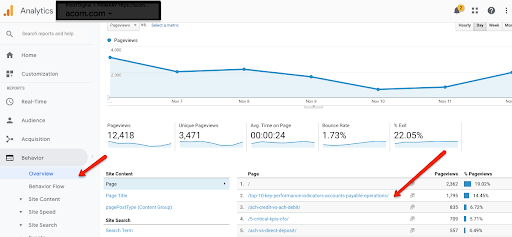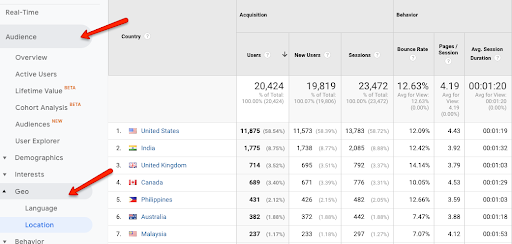To stay ahead of your competitors, it is vital to leverage the data at your fingertips to grow your company. Your business depends on it.
By: Stacie Porter Bilger
Data-Driven Marketing – Let’s Get Started!
The first thing you probably want to know about data-driven marketing is … what is it?
“Data-driven marketing refers to the marketing insights and decisions that arise from the analysis of data about or from consumers.”
I know, it’s a boring definition. But let’s add this at the end: “…and using this data over and over again to get consumers to contact you.”
And that’s where it gets interesting. Because it’s crazy fun to use data and see lead after lead come in. Even crazier is the amount of actionable data you can get every day to dramatically elevate your marketing and sales efforts.
It wasn’t too long ago that I used to call on the administrative staff of one of my client’s competitors. My goal was to gain insight as to how they were reaching their customers. (Yes, I really did this, because the administrative staff usually has the best pulse on company marketing efforts.)
Today, you don’t have to be a spy and infiltrate your competitor’s inner circle. You have tools at your fingertips to:
- See what your competitors are doing.
- Identify in real time which marketing/sales efforts are working, and which ones are not.
- Recognize what customers really care about by simply looking at the data.
- Instantly test what works for you.
In short, online tools make competitive intelligence so much easier. So, are you ready for some insights on how you can use driven marketing strategies?
Here are 3 EASY STEPS to start the process of using data to improve your marketing.
“If you can’t measure it, you can’t improve it.” – Peter Drucker
The 3-Steps to Start Elevating the Marketing Game
Step #1: Create Analytics Dashboards
In all aspects of your business, you should be looking at data reports on how you are doing, and monthly financial reports that include income, balance sheets and cash flow.
The same is true for marketing. At minimum, you need to understand your visitors, goals/conversions, sales funnel, and what content works best. There is no reason at all to be shooting in the dark when in comes to marketing.
If done right, you can learn in detail how to increase leads (by the hundreds) for your company. Being able to view data easily is key, and it’s possible with dashboards in Google Analytics.
Tip – How to Create Google Analytics Dashboards
Simply login to your Google Analytics account and go to “Dashboards” in the menu bar. You can use the Starter Dashboard developed by Google, and/or you can create a custom dashboard. You can also add any widget you want that will show you the most important metrics, and view this data via pie charts, maps, timeline, etc.

Once you have your dashboards setup, it’s a lot easier to find actionable data to help you elevate your marketing efforts.

Step #2: Improve What’s Popular
You can enjoy quick wins right now, by looking at what your website visitors care about.
Go to Behavior on the Google Analytics Menu, and click on Overview or Site Content (see image below). What are the most popular pages on your site? Go to a few of the top pages and ask yourself the following questions:
- How’s your headline? It’s the first things visitors see, and has a significant impact on how this page ranks on Google. Your headline better be good and use the words that match what your selling.
- Do you have images that tell the story of your products/services, and are they good quality? People don’t read anymore, so make sure your images support your brand.
- How is the copy? Is it persuasive? Does it got your point across? Does it make visitors want to call you to solve their problem? It should…or you’re leaking leads every day.
- Do you have trust indicators above the fold on these pages? Trust indicators tell the visitor that they can trust you (i.e. testimonials, certifications, companies you work with, years in business, etc.). Will potential customers be able to trust your brand based on what they see?
- How are you capturing leads on this page? Do you have a form visitors can fill out, or strong Call to Action (CTA)? You need to give visitors a reason to share their information with you.
Start with this step before you spend hours putting together a marketing game plan. It’s likely a better use of your time to fix these pages and start learning what works. Start with a quick win by measuring your online website behavior – it’s a goldmine of valuable information.
Step #3: Find Out Where Your Customers Are
The next step is to go find your customers. While there are a lot of ways to do this, it can be overwhelming to go through the process of strategizing and identifying those individuals or companies willing to write you a check.
The beautiful thing about the Internet is that those customers tell you where they are, even though they might not realize they are doing so. There are so many marketing spying tools you can use for this, and I love them all.
We use a variety of such tools plus Google Analytics insights to target content, ads (both digital and print), and social media strategies. This gets our clients in front of potential buyers with ease.
Where do you begin? First, determine where your best potential clients are located. Thanks to Google, you don’t have to look very hard to find this data.
Log into Google Analytics (by now, you should have this data point on your dashboard). Click on Audience, Geo and then Location. You’ll be able to see visitors by country, state and city, and determine how long they stay on your site, plus see conversions by region.
These are the visitors you need to target.
Next Steps
So far you’ve created a dashboard, learned how to use what’s popular and know where your customers are located. You’re on your way to data driven marketing. The next step is to start using data to change your marketing efforts.
This includes advanced analytics, and seeing bigger and better results from your marketing efforts. We will address these topics in future blogs, plus provide more tips and techniques that will help you grow your business.
[dt_default_button link=”https://proofdigital.wpengine.com/contact/” button_alignment=”default” animation=”fadeIn” size=”medium” default_btn_bg_color=”” bg_hover_color=”” text_color=”” text_hover_color=”” icon=”” icon_align=”left”]Get Quick Wins.[/dt_default_button]









